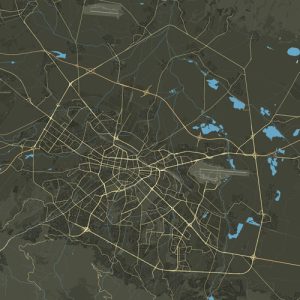At the end of the 18th and the beginning of the 19th century, the city of Sliven was a developed commercial and economic center. A famous textile and market area, there were many Abadji and Kebedji workshops in our city. The textile craft was a livelihood for many Slivens.
The production of hundreds of meters per year of thick woolen cloth /aba/ has found wide consumption especially for the Turkish army. Such master weavers were some of the most respected and richest people, people with authority and a place in society. Such was also the famous Sliven merchant and abbot grandfather Boyu from the Patkoolu family.
Dealing with viticulture, rose growing, trade in textiles and animals, this Sliven merchant gradually, with a lot of hard work and with the help of his whole family, acquired a solid wealth, with which he could afford to hire Trevna craftsmen – woodcarvers and to build a wonderful home, which, fortunately for us, is the well-known “house museum Sliven Life XIX-XX century”.
For a person who arrives from the outside in the bustling industrial Sliven with its factories, plants and new housing, it is difficult to imagine that behind the high walls there are still charming old houses, immersed in the lush greenery of the extensive cobbled courtyards. Under their darkened eaves, behind the forged gates, the old Sliven with its unique Renaissance architecture and the rich Sliven household goods has remained alive.
Built in 1813, the house museum “Sliven Life XIX-XX century” is typical of this Sliven style – an open, loggia, one-story house with symmetrically located booths/terraces, its deeply dug basement under the whole house, carved ceilings, a single-armed staircase and the saivanta in the yard under which the agricultural implements are arranged.
Here, everything has preserved the beauty, romance and coziness of the Bulgarian house. The style and domestic arrangement, the silence, the greenery and the spaciousness convey a unique mood of this lively and colorful monument to the urban lifestyle and to the building genius of our people, in which comfort and beauty are combined with remarkable skill and speak eloquently of the talent of its creators, who with great skill have applied their flair to the beautiful and the practical.
Since 1963, an exhibition has been opened here – the interior of a craftsman’s house from the 19th century.
For several years, the house has had a renewed exhibition, with which we present valuable household and household items with an emphasis on winemaking, textile production, calendar, work and family rituals , clothing, bedding and decorative fabrics.
The house consists of 4 rooms. In the first, we show the winter, spring and summer ritual, with the emphasis on the festive costume, the table with food and bread, as well as the songs or names that were sung or spoken on the holiday itself. All this fascinates with an original arrangement. In the second room, we show the typical kitchen with the hearth, cabinets, table and dishes, as well as the traditional Sliven holiday costume. In the third room – water heater, the hearth burned all day and heated water.
In the fourth room, the largest and most beautiful, the so-called guest room, with the beautifully illustrated with floral motifs, describing the Bosphorus “alafranga”, we show the “wedding” custom with all the necessary attributes for the occasion, as well as costumes from Kotel, Nova Zagora, Tvarditsa, the Sliven villages, and the decorations for them.
The highlight here is the indoor bathroom behind one of the closets. A small komshuluk connects this house with another one, which is also part of the “Sliven Life XIX-XX century” house museum, but in it we show the urban fashion and arrangement. After the opening of the European Markets, the merchants who go out to sell their goods return from outside with something bought from their markets.
Thus, European fashion with magazines, fabrics, furniture and crockery is gradually entering Bulgaria as well. This is how we make a comparison between three eras, and that is what makes our Ethnographic Complex House Museum “Slivenski Beat XIX-XX Century” unique.
History has worked with vivid imagination in these periods, and we show with great desire and diligence the development of our difficult, suffering and majestic national Revival.

